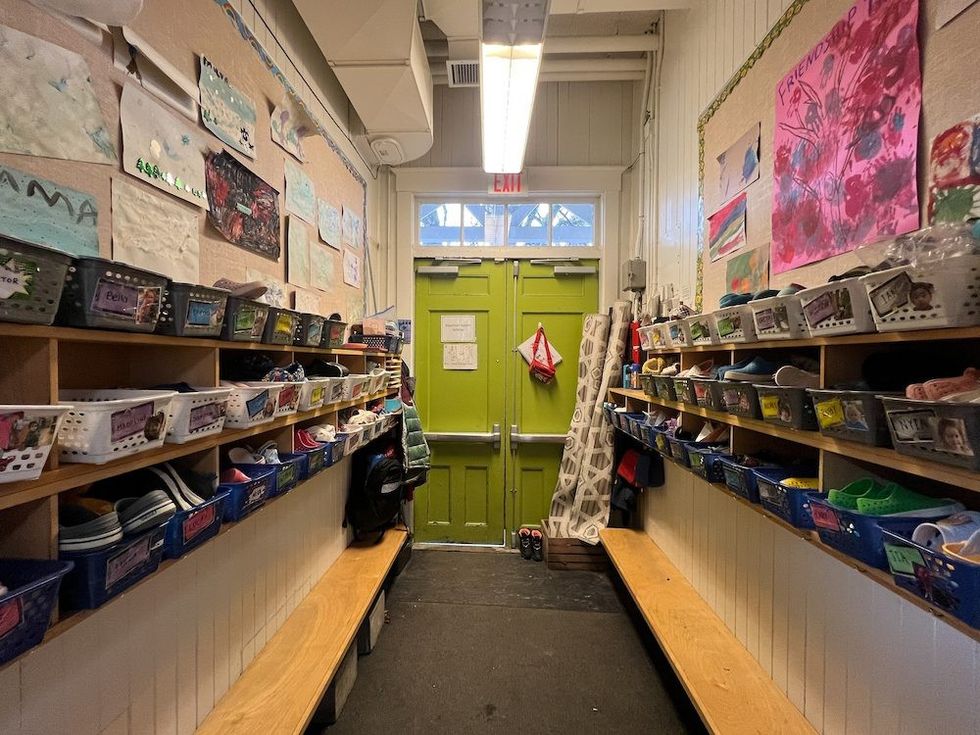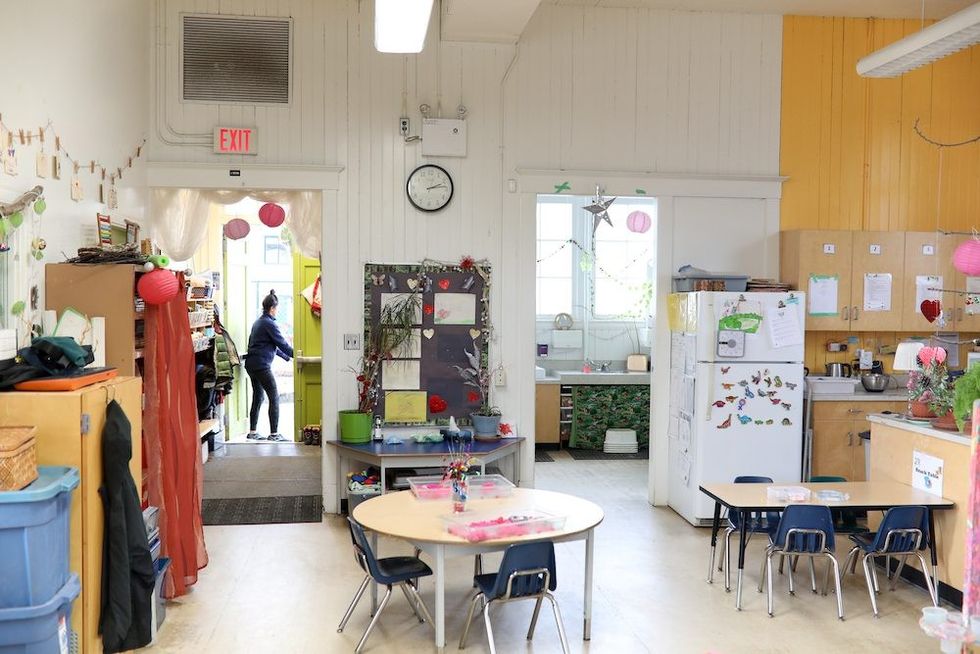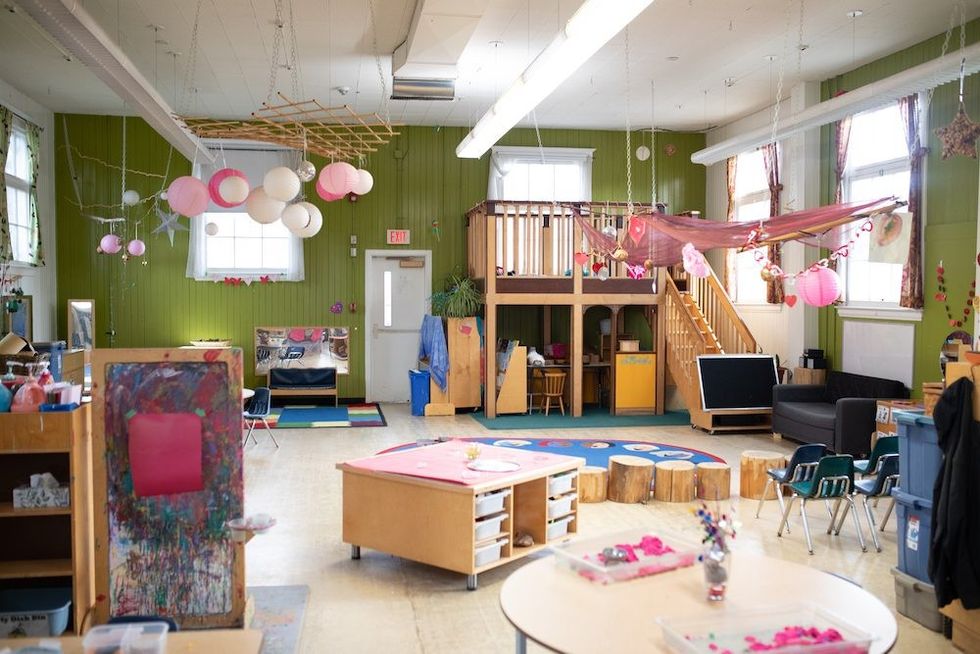A historic schoolhouse will likely avoid the landfill due to the determination of a Vancouver entrepreneur and a First Nations community who are stepping up to save it.
Glyn Lewis, owner of Renewal Home Development, was on a mission to find a new home for the 1912 schoolhouse building, slated for demolition on April 1. At the eleventh hour, the Squamish Nation stepped forward to say they’d make use of it as a learning centre.
Lewis runs a business that relocates and repurposes houses that are destined for demolition, in an effort to cut embodied carbon and keep waste from the nearly at-capacity landfill. Last year, he discovered the schoolhouse would be bulldozed as part of the seismic upgrade to Henry Hudson Elementary School, located at Maple and Cornwall in Kitsilano, not far from Kits Beach. The schoolhouse sits at the rear of the bigger school, in a corner of the site. Both buildings were to be demolished. In February, the Vancouver School Board rejected Lewis' offer to find a new location for the little schoolhouse, he says.
The wood-frame school is solid and still usable, says Lewis. Just before spring break it was used as a pre-school and for school programs. However, the school board acquired a demolition permit because they deemed it was in poor condition, lacked modern energy efficiency, and was too costly for maintenance or updates, according to a media report.
Lewis called that assessment “a hit job.”
“We had a building inspector and a building engineer assess the schoolhouse. All the systems have been upgraded in the past 10 to 15 years. The electrical panel and hot water tank are brand new. The roof trusses and floor joists are made of enormous old growth beams. The inspecting engineer quipped, ‘This building is stronger than most brand new 2x4 framed homes,'" Lewis said.
“Are there ways we will make the building more energy efficient? Absolutely. New windows. Add insulation into the attic and below the joists. Replace the furnace with a cold climate heat pump. There are lots of rebate programs to make all these upgrades once the building arrives.”
Demolition is typically the go-to cost saving measure for many building owners, but Lewis says government can do better. He’s already moved and repurposed several Vancouver houses and retrofitted them so they’re energy efficient.
He argues that government-funded projects should consider demolition only after all other efforts have been pursued.
He questions why the Ministry of Education doesn’t have a sustainable building removal policy when working on seismic upgrades of schools.
Lewis and Adam Corneil, the owner of salvaging company UnBuilders, wrote to the Minister of Education and Child Care, outlining the situation and citing statistics, such as the 100 tons of raw materials contained within the 2,000-sq.-ft. schoolhouse. Also, demolition materials take up 40% of the region’s local landfills.
“All these schoolhouses should have been assessed for retention, relocation and deconstruction, in that order, for best first use,” Lewis said in an interview. “Machine demolition should be the last option, not the first.
“I believe the Province has a responsibility, as part of its Climate Action Plan, to encourage and support the sustainable removal of buildings, where possible, to mitigate embodied carbon waste.”
Machine demolition is the easy, fast thing to do, says Lewis, but relocation doesn’t necessarily cost more. It could even save the school board money. Owners of unwanted buildings, however, often see relocation and all it entails as a headache, especially when they’re on a development timeline.
It’s not an easy process, and much needs to be done before the deadline approaches. After many years of planning, the school board wants to get on with building its new school. There are agreements to be made with the VSB and whoever takes the building, and road and park permits to be obtained. There are costs to move the building and the infrastructure needed once it arrives at its new site. Although it’s a short move through Vanier Park to a barge, it still requires significant work to prepare the building before loading it onto a flatbed truck and barging it, and then trucking it to site. Lewis and the Squamish Nation are still awaiting permission from the Vancouver Park Board to use either Kits Beach or Vanier Park to move the schoolhouse, with its pending demolition date now pushed to June 1.
During her tenure as school board trustee, Patti Bacchus pushed to save two small schoolhouses, and on social media, she advocated for saving the Henry Hudson schoolhouse, too. The problem is that there often isn’t funding for updating the buildings, despite their heritage value, she says.
She was chair of the Vancouver Board of Education when the 112-year-old little schoolhouse at Sir Guy Carleton elementary in the south part of the city came up for demolition after a fire. In that case, the youth-focused Green Thumb Theatre came to the rescue with a $1.2M plan to take it over.
“That was like breaking heads together in the board office, to get the bureaucracy on side,” says Bacchus. “We had some hard meetings. But in fairness to the bureaucracy, they are pretty thinly staffed, trying to get these major construction projects done. It’s not a simple process to rebuild a school or build a new one — and on really, really tight budgets from government. Everyone is trying to do three jobs. So when you say, ‘Oh, what about that old building out back?’ They look at me like, ‘What are you talking about?’ And I get it, the priorities are obviously on students and safety and getting buildings up and running.
“Part of it is the reality of a system put through the grinder financially…there’s no evil villain in this. And I think if you talked to Glyn Lewis, he would say, and I agree with him, that there is a need for a guiding policy. It hasn’t been a priority, and I can understand why….but at the same time, we have to consider these things.”
Until he retired a little over a year ago, Jim Soles worked for 21 years as manager of major capital projects for the Greater Victoria school district. He oversaw the seismic upgrades of the schools, averaging about 1.5 upgrades a year. The nearly complete upgrade of Victoria High School is massive and involved reinforcing the structure with steel and concrete footings, while maintaining the bulk of the original façade and art glass, marble and millwork in the interiors. Although it would have been slightly cheaper to demolish than undertake the $79.7M renovation, he says the blowback from the community would have been huge.
Built in 1876 out of logs, then replaced in 1914 with a brick masonry building, Victoria High is one of the oldest high schools in Canada, and a beautiful, historically significant landmark. Soles says Victoria was fortunate that several of its old schools were solidly built out of brick and mortar, as opposed to more hazardous wood-frame construction with masonry cladding, which is riskier in an earthquake.
Although it was never relevant to his job, Soles says he favours relocation of historic buildings whenever possible. Many old Victoria houses have been barged to Washington State and the Gulf Islands in recent years. He said he is glad that Lewis is attempting to save the little yellow schoolhouse in Vancouver.
“I’m really surprised from a heritage perspective [they’d demolish it],” he says. “It seems it should have been kept.
“It’s really great, I really like to see it,” he says. “The challenge is if you are in the middle of downtown Vancouver, it’s more difficult. It depends on the size [of the structure]. If it’s just a little two-classroom school, depending on how it’s structured, you could cut it in half and put it back together.
“The issue of moving buildings is near and dear to me because I think it’s important… I like seeing stuff get recycled and reused. The ultimate recycling of a house is to move a house.”
























